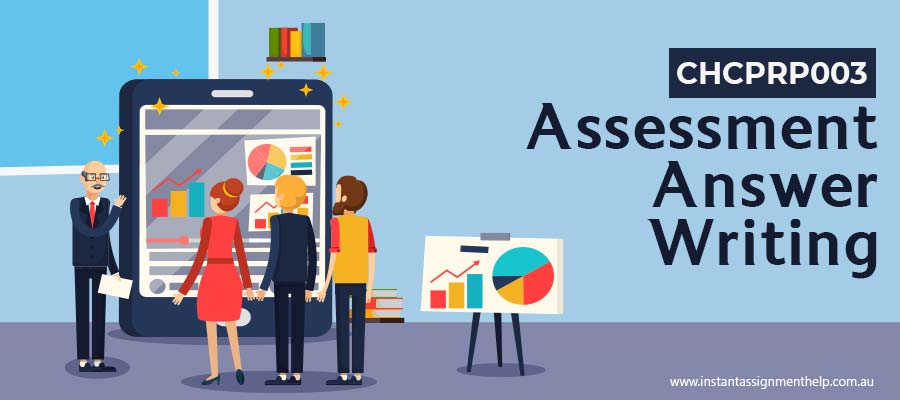Table Of Contents
Credit, debit, asset, liabilities, customers, account, balance, transactions, profit, loss…Woah! Sounds crazy, right? Only a student pursuing a degree in finance or accounts can understand the true value of these words.
Finance is a tough subject, but the toughest part is writing a financial accounting assignment. Many students struggle with this task and turn to Instant Assignment Help Australia for reliable support and financial accounting assignment help.
When it is about financial accounting, the accounting cycle is a very important topic that explains the whole process and stages in brief to you. So, our experts have drafted this blog, including all the different stages in a simple manner. So, let’s go check them out in detail.
What Is Financial Accounting?
Financial accounting is the process of preparing statements for a company that can be used to reflect its financial performance. The main objectives of financial accounting are:
- To record the transactions systematically
- To be certain of the transactions recorded
- To get acquainted with the solvency position
- To know about the financial position of their company
- To provide information to users for the purpose of rational decision-making
This is a field of accounting that is related to summarizing, analyzing, and reporting the transactions that take place in an organization. Now, let us take an insight into the most popular topic of this subject, “Accounting Cycle.”
What Is the Accounting Cycle?
The accounting cycle is a collection of processes, such as identifying, analyzing, and recording the accounting events of a company. This includes a step by step process which, when followed, makes the things easier for everyone, right from drafting to analyzing the drafted data. Here is the 7-step process that should be followed for productive results in a simple approach.
- Transactions
- Daybook
- Ledgers
- Trial balance
- Balance sheet
- P&L Statement
- Cash flow statement
I. Transactions
Transactions are the basic fundamentals of financial accounting. They form the backbone of the whole process. If you are wondering how to do accounting transactions, then just follow these steps below:
- Gather all the necessary paperwork
- Set different accounts for all transactions
- Differentiate between debit or credit
- Check journal entries for accounting transactions
- Transfer journal entry into ledger periodically
- Balance the general ledger account regularly
- Check for any errors and correct them
- Add a brief description for each transaction
- Save a backup for all your documentations
II. Daybook
Daybook is a record of all the transactions that you make in a day. It is organized systematically to facilitate in fetching the data from any particular day easily. There are mainly six types of daybooks that are used commonly, which are:
- A sales daybook is just to keep the record of all the sales invoices.
- A sales return daybook is used to keep a record of sales credit notes.
- You can maintain a record of all the purchase invoices in a purchase daybook.
- If you have to record purchase credit notes, then go for purchase returns daybook.
- You can also use a payment cashbook to record monies that are paid out of business.
- For the record of the monies paid into the business, you can use receipts cashbook.
III. Ledgers
Ledgers are used to record all the transactions that have happened in the entire organization under different departments or branches. Even though you already use a journal for a similar purpose, it is not as effective as this since here you have a clear tabular representation of all the transactions:
- Drawing the ledger account.
- Split the leaf into two sections one for debit and other for credit.
- In each section, make four columns: date, particulars, journal folio, and amount.
- Follow the same four columns for both the credit and debit sections.
- Now, transfer the transactions from journal to the ledger accounting, which is also known as posting.
- Enter the page numbers of the journal in the folio column of the ledger account, which is known as foiling.
- Now, for the casting, separate the amount of both credit and debit accounts.
- Check the entries and find the differences in the credit and debit account, which is also known as balancing.
IV. Trial Balance
Trial balance plays a very crucial role in predicting the financial results of a business. So, it is very important that you know how to calculate and write down a trial balance for your organization. If you are wondering how to do that, then do not worry! It just takes a few simple steps to prepare a trial balance for your account, which is as mentioned below:
- Prepare a worksheet for your trial balance.
- Split it into three columns, namely account title, debit, and credit.
- Now, fill the account title and add the corresponding details of the same in either debit or credit section based on the type of transaction.
- Sum all the entries in the debit and credit account individually and note them in the total column.
- Compare and balance the totals of both the credit and debit columns.
V. Balance Sheet
A balance sheet is one of the most important financial sheets that a student is needed to prepare during the accounting cycle. If you are a beginner and do not much idea on this topic, simply follow the steps below and draft a perfect balance sheet in no time.
- Make a note of all basic accounting equations.
- Choose a date for the balance sheet you are preparing.
- Make the header for your balance sheet.
- Now, for preparing the assets section, list down all assets.
- Begin with current assets and then move to non-current assets that are also known as long-term assets.
- Include any intangible assets in your balance sheet.
- Add all the current and non-current assets.
- Name the sum of all assets as total assets.
- Now, make a liabilities section.
- Begin with current liabilities followed by fixed liabilities.
- Add both the current and fixed liabilities.
- Now, calculate the owner’s equity and totals.
- First, retained earnings are to be calculated, followed by the owner’s equity.
- Now, add total liabilities to total owner’s equity.
VI. P&L Statement
P&L stands for Profit and Loss statement. This is an income statement prepared to measure the business revenue and expenses during a given period. There are many uses of preparing the P&L statement, but the primary objectives are to calculate net operating profit or loss. If you are planning to prepare a P&L statement by yourself, then here are some steps that can guide you through the process:
- Select a time frame for which you want to prepare the P&L statement. You can either go for a monthly, quarterly, or annual time period.
- Now, list down your business revenues for the chosen time period. Break the totals down in a month-wise manner.
- Include income sources and calculate your expenses. While doing so, make sure to separate direct costs, such as COGS from OPEX.
- Subtract direct costs from your revenue to determine the gross profit.
- Subtract your total expenses from the gross profit. If the result is a positive number, then you are getting profits, or in the otherwise, you are in loss and need to take a necessary step to overcome it.
VII. Cash Flow Statement
Cash flow statements are one of the most popular finance statements. It reports the cash generated and spent during a specific period of time. There are mainly three sections in the statements of cash flow, which are: operating activities, investing activities, and financial activities. If you want to know how to prepare cash statements, then follow these simple steps:
- Collect all the required documents.
- Take note of all the important information.
- Make a calculation of all the changes in the balance sheet.
- Make a tally to put every change in the balance sheet into the statement of cash flows.
- Adjust non-cash items from the statement of total comprehensive income and other information as well.
- Verify the material balance sheet items checking each movement into the content.
- Add all the items and perform a final check on the content.
These are the different stages of the accounting cycle that you need to know about for scoring better grades in your assignments. Writing a good assignment in financial accounting is complex and tedious. This is why students seek professional help and save themselves from the stress and burden. If you are wondering why one should go for professional assistance, then turn to the next section and find all answers to your queries.
What Is the Need for Financial Accounting Help?
Many students are curious about why to seek financial accounting help from experts. From the above sections of this blog, we can observe that writing a financial accounting is complex. This is a tedious job that cannot be performed by everyone with ease. Also, on the other hand, there is no escape from this task. At such times, it is advised to seek help from the experts of Instant Assignment Help Australia. If coursework writing is your concern, then do not miss the 7 coursework writing steps to follow to get good grades.
When you seek our assistance for your assignment writing task, we allot the best writers for completing your task. Our writers put all their efforts and make the best of their years of experience to draft an assignment for you. We make sure that you get a top-notch document that can help you in impressing your professor and score the best grades. So, without wasting any more time, turn to us now!
Students Also Look For:
USD6
-
Topic CreationUSD 3.87
-
OutlineUSD 9.33
-
Unlimited RevisionsUSD 20.67
-
Editing/ProofreadingUSD 28
-
FormattingUSD 8
-
BibliographyUSD 7.33
RECENT BLOGS











